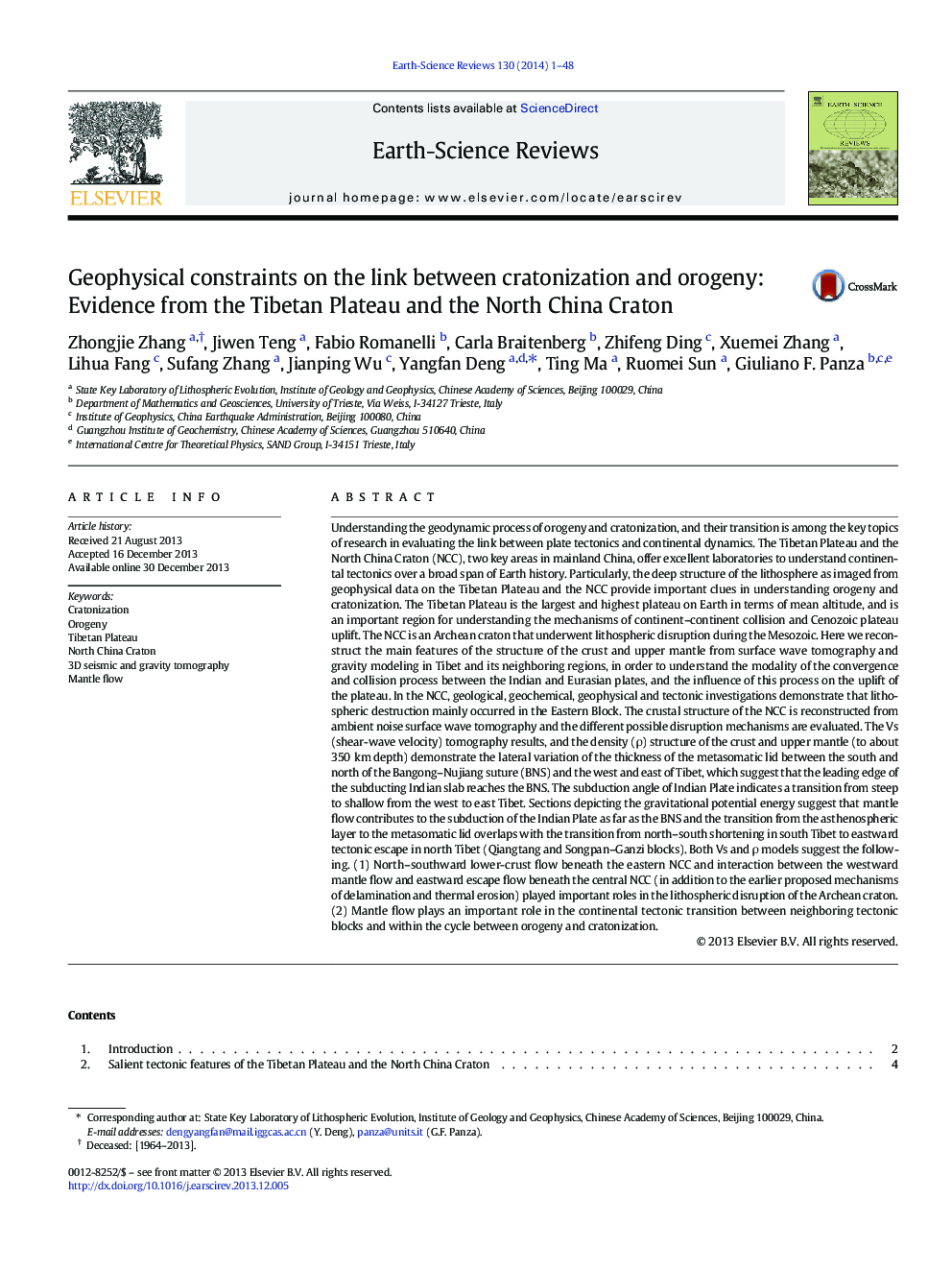| کد مقاله | کد نشریه | سال انتشار | مقاله انگلیسی | نسخه تمام متن |
|---|---|---|---|---|
| 4725770 | 1639972 | 2014 | 48 صفحه PDF | دانلود رایگان |

Understanding the geodynamic process of orogeny and cratonization, and their transition is among the key topics of research in evaluating the link between plate tectonics and continental dynamics. The Tibetan Plateau and the North China Craton (NCC), two key areas in mainland China, offer excellent laboratories to understand continental tectonics over a broad span of Earth history. Particularly, the deep structure of the lithosphere as imaged from geophysical data on the Tibetan Plateau and the NCC provide important clues in understanding orogeny and cratonization. The Tibetan Plateau is the largest and highest plateau on Earth in terms of mean altitude, and is an important region for understanding the mechanisms of continent–continent collision and Cenozoic plateau uplift. The NCC is an Archean craton that underwent lithospheric disruption during the Mesozoic. Here we reconstruct the main features of the structure of the crust and upper mantle from surface wave tomography and gravity modeling in Tibet and its neighboring regions, in order to understand the modality of the convergence and collision process between the Indian and Eurasian plates, and the influence of this process on the uplift of the plateau. In the NCC, geological, geochemical, geophysical and tectonic investigations demonstrate that lithospheric destruction mainly occurred in the Eastern Block. The crustal structure of the NCC is reconstructed from ambient noise surface wave tomography and the different possible disruption mechanisms are evaluated. The Vs (shear-wave velocity) tomography results, and the density (ρ) structure of the crust and upper mantle (to about 350 km depth) demonstrate the lateral variation of the thickness of the metasomatic lid between the south and north of the Bangong–Nujiang suture (BNS) and the west and east of Tibet, which suggest that the leading edge of the subducting Indian slab reaches the BNS. The subduction angle of Indian Plate indicates a transition from steep to shallow from the west to east Tibet. Sections depicting the gravitational potential energy suggest that mantle flow contributes to the subduction of the Indian Plate as far as the BNS and the transition from the asthenospheric layer to the metasomatic lid overlaps with the transition from north–south shortening in south Tibet to eastward tectonic escape in north Tibet (Qiangtang and Songpan–Ganzi blocks). Both Vs and ρ models suggest the following. (1) North–southward lower-crust flow beneath the eastern NCC and interaction between the westward mantle flow and eastward escape flow beneath the central NCC (in addition to the earlier proposed mechanisms of delamination and thermal erosion) played important roles in the lithospheric disruption of the Archean craton. (2) Mantle flow plays an important role in the continental tectonic transition between neighboring tectonic blocks and within the cycle between orogeny and cratonization.
Journal: Earth-Science Reviews - Volume 130, March 2014, Pages 1–48